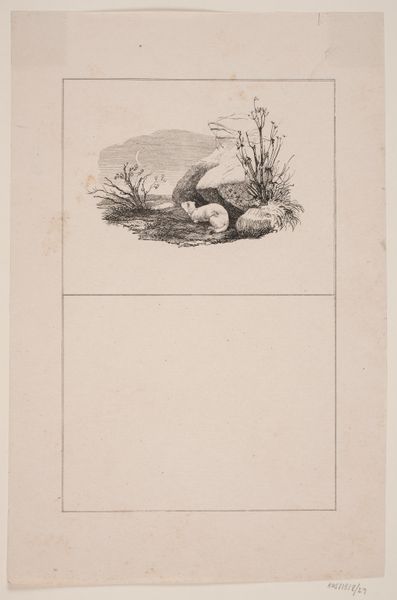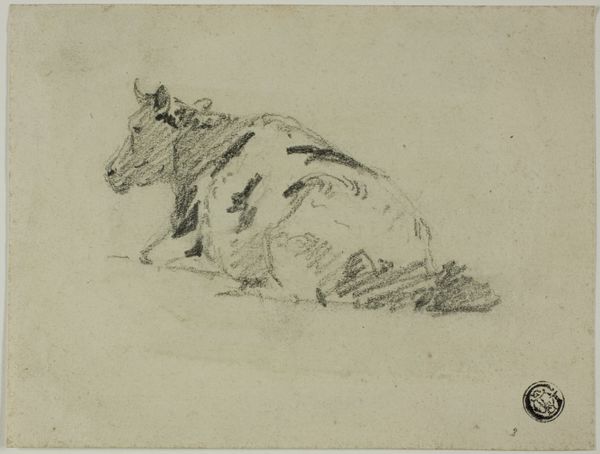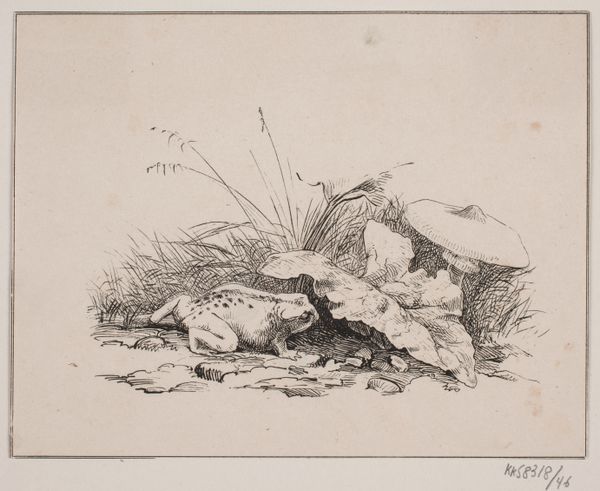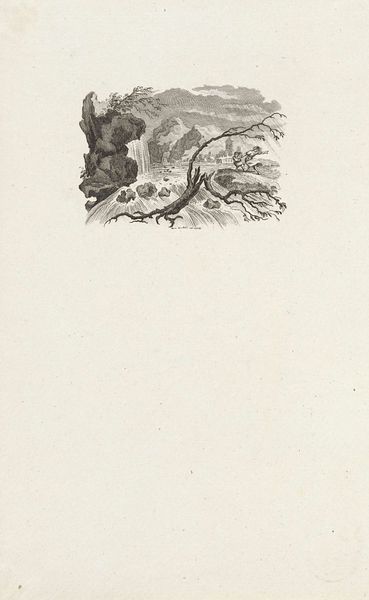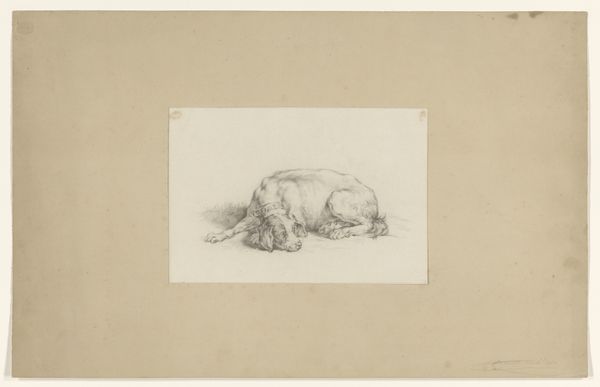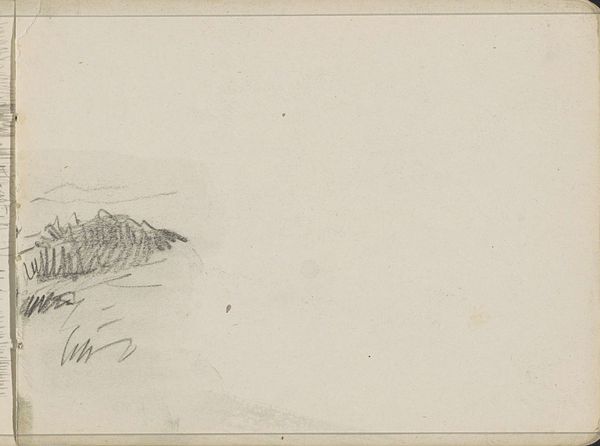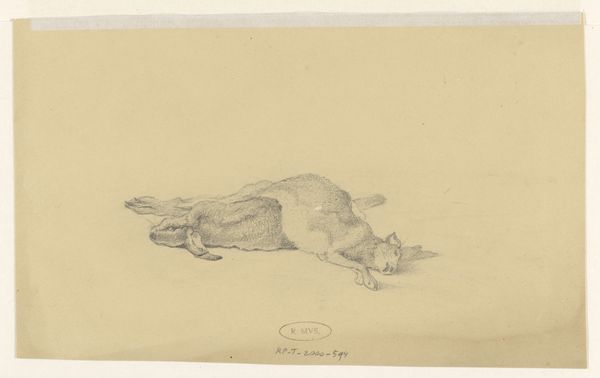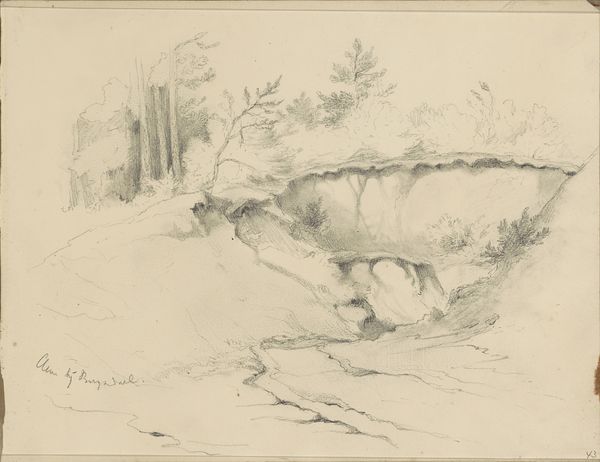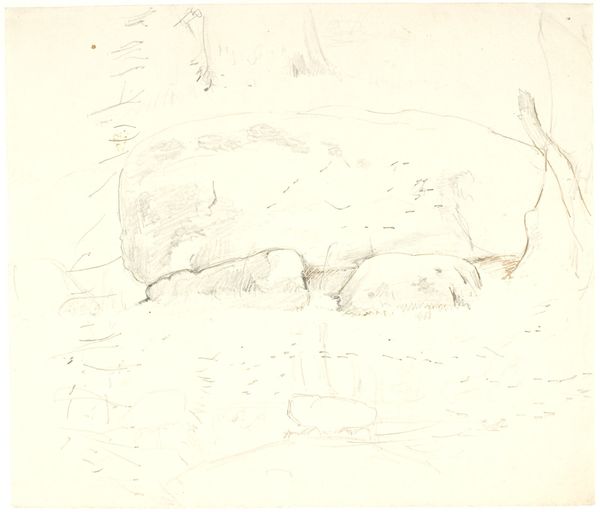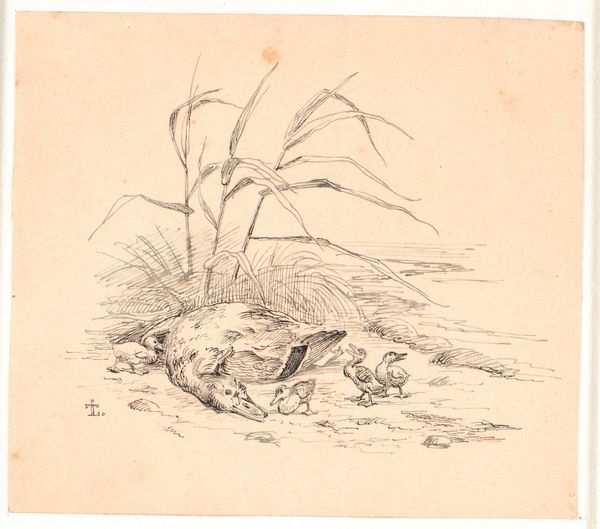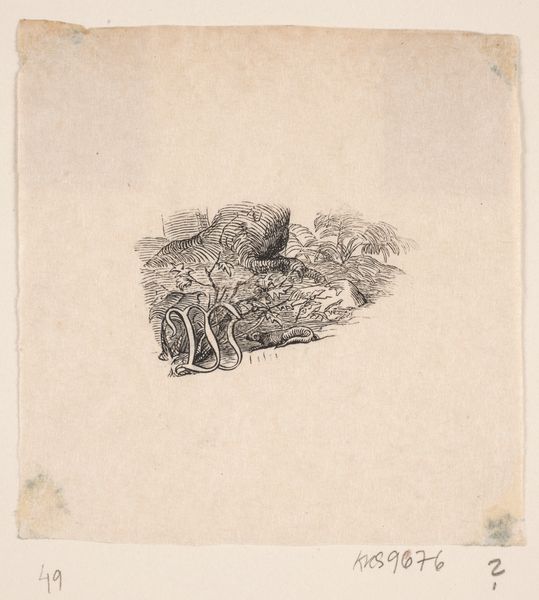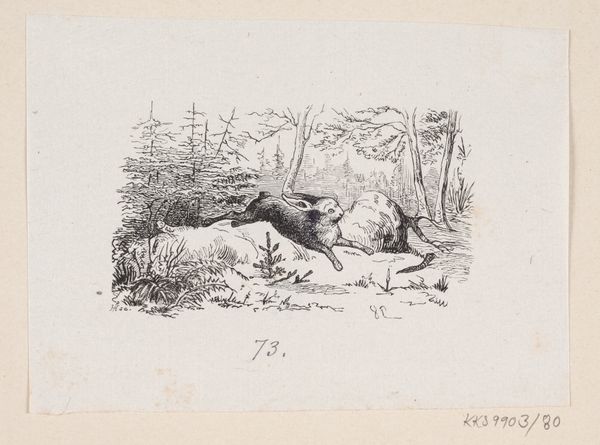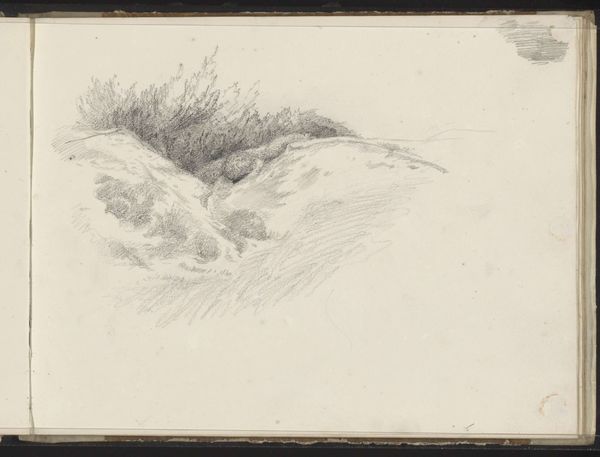
drawing, pencil
#
pencil drawn
#
drawing
#
landscape
#
pencil drawing
#
pencil
#
realism
Dimensions: 265 mm (height) x 185 mm (width) x 55 mm (depth) (monteringsmaal)
Curator: This intriguing sketch is "Martens stambog," a work executed around 1825 by Ditlev Martens. It’s a simple pencil drawing, currently residing here at the SMK, the Statens Museum for Kunst. What’s your initial reaction? Editor: Stark simplicity. The lone boulder, carefully shaded, gives the drawing a stoic presence despite the delicate medium. It’s almost monumental in its isolation, a feeling emphasized by the surrounding sparse vegetation. Is this meant to carry a deeper meaning? Curator: Martens, like many artists of his time, was deeply engaged in representing the Danish landscape. Think of the political and cultural landscape in 1825 Denmark. Artists played a crucial role in fostering a sense of national identity. Landscapes, even one featuring a seemingly simple boulder, were imbued with significance. Editor: I can see that. Boulders often symbolize strength, permanence. This particular rendering reminds me of those ancient cairns, carefully stacked stones marking sacred sites or pathways. Do we know if this boulder held some specific, perhaps local, significance? Was it a landmark? Curator: Sadly, that particular piece of history is lost to us. But consider how the burgeoning scientific fields of geology and natural history were shaping how people viewed the landscape. Suddenly, the natural world wasn't just picturesque, but also a repository of knowledge and history. Perhaps Martens' choice was deliberate, reflecting this shifting perspective. Editor: The artist's precise rendering of the light catching the rock face also captures the cultural move to realism. Light can also have a symbolic meaning of enlightenment in those years when countries embrace scientific revolution. This image has strong roots and relations to Denmark as well as international dialogue on art. Curator: And there's the signature, almost understated, tucked into the lower right. It signals the artist's individual presence, the subjective viewpoint applied to this otherwise very objective scene. This rock is special enough to mark as “landscape.” Editor: That makes you wonder, was it a commissioned artwork to mark specific grounds? Interesting angle here as the artist places the rock in focus, not as a casual backdrop, making this an unconventional view. The symbol becomes all the more powerful through simplicity. I’ll look at landscapes in a new light now! Curator: Indeed. It prompts you to re-evaluate seemingly straightforward portrayals. Next time we meet, I’d love to chat more about how such works informed broader national narratives.
Comments
No comments
Be the first to comment and join the conversation on the ultimate creative platform.

